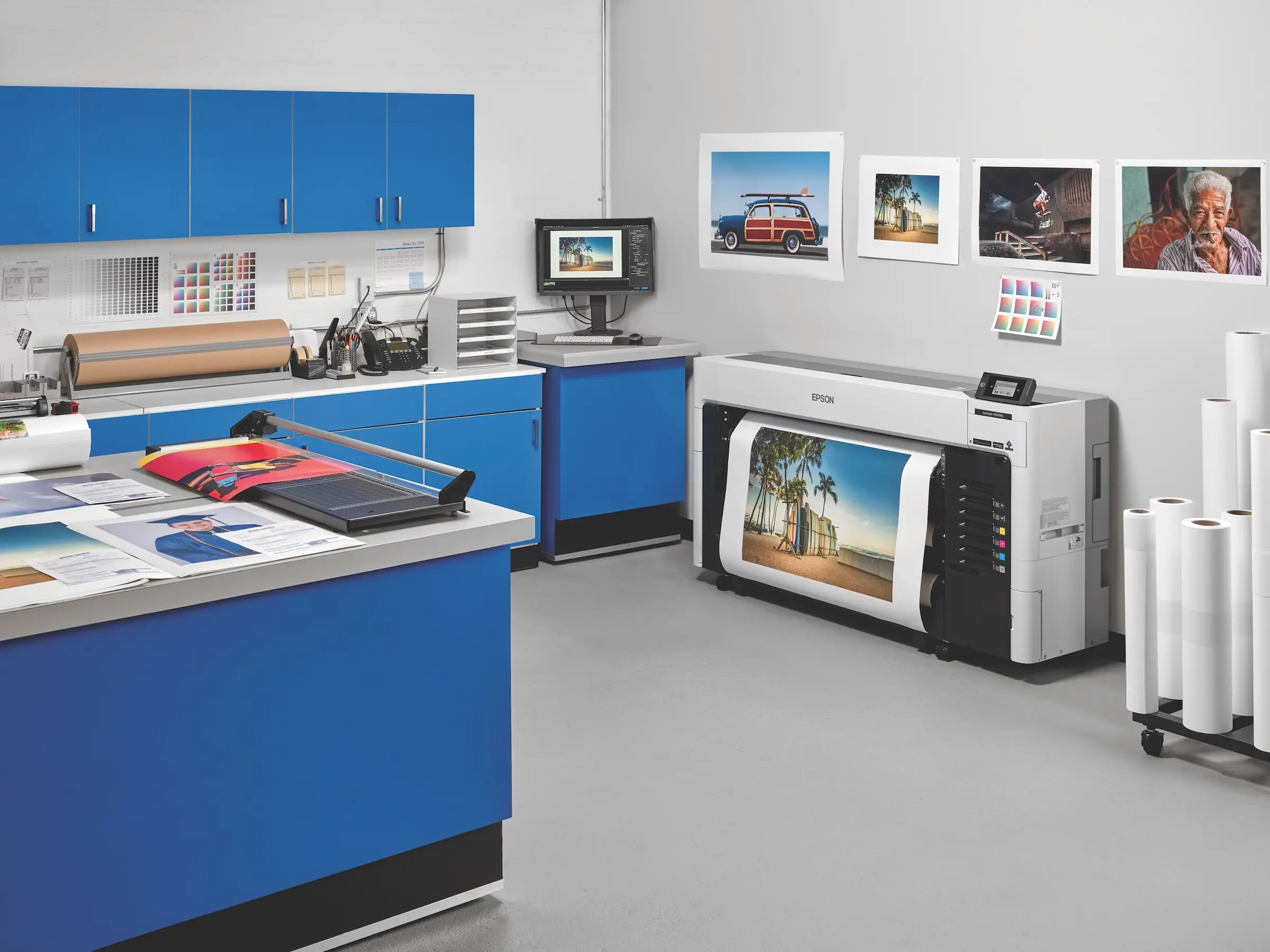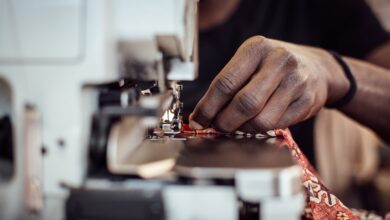While market forecasters aren’t calling it a complete recession, experts agree that inflation, interest rates, and the looming impacts of economic triggers are leading us to a general slowdown.
As commercial and graphic printers survey where they are and how to navigate the waters ahead — all while zeroing in on turning a profit in 2024 — there are several trends driving decisions:
- Print service providers (PSPs) need to find ways to expand product offerings with less hardware investment
- There is a growing desire for new applications that are of high quality
- Volume and versatility equate to income for shops
Looking ahead with a new perspective
As printers gear up to weather a potential downturn, here are some helpful tips for planning and potentially coming out ahead:
1. Scaling down space and equipment while scaling up production capabilities
Companies across a range of sectors have reduced staffing over the past year, and the printing industry is not exempt from post-COVID changes. In addition, the pandemic has led to consolidation, with many professional printers downsizing or relocating to smaller spaces with less room for equipment and production needs. With businesses adjusting to reduced space — in some cases nearly half of the square feet they were working in previously — print service providers are looking at ways to modify production capabilities to maintain output ratios and stay ahead of customer needs.
To extend production capabilities, many graphic printing shops are looking to the latest suite of aqueous inkjet printers versus the resident solvent or latex solutions, as they can offer a lower cost to entry. These printers are easy to operate and are becoming more compact, making them ideal for space-constrained environments. They boast impressive print speeds, with the benefits that aqueous ink provides for a range of applications, making it an ideal production solution.
Some new generation production aqueous printers expanded productivity with a greatly reduced footprint, all-front operation, and a slim profile design that enables placement where other printers are not able to be installed and operated — even against a wall or configured back-to-back. These smaller footprint solutions offer a new level of workflow freedom to shops scaling for a new market environment.
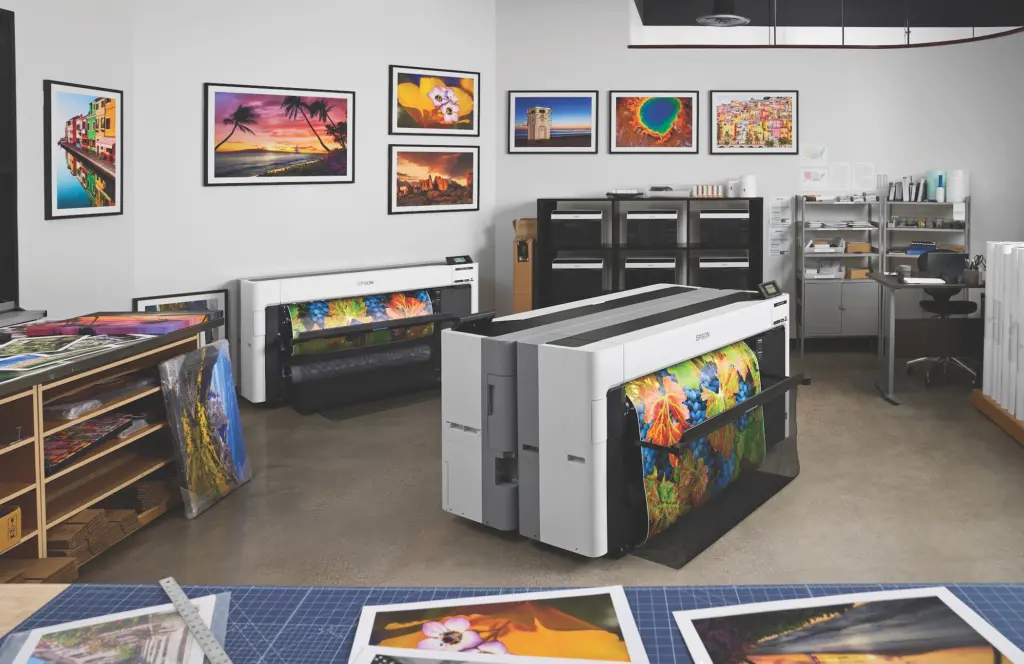
2. More variety, file types, and more applications
The diversification of products has helped many providers grow their business and increase profit margins. Today, it’s essential that printers expand applications, as professional clientele are adding wide-format graphic and sign production, as well as promotional fliers, to their requests.
In addition, the products expected to grow fastest in demand over the next three years include banners, posters, and presentation graphics/marketing collateral. With some planning and the integration of an aqueous-based production printer, print shops can expand offerings to include high-quality indoor signage, posters, marketing graphics, and more.
Today’s aqueous solutions support a variety of media compatibility and can expand output capabilities for print shops, with some offering dual-roll media systems for fewer touch points and seamless switching from one media type to another. This allows for production printers to easily switch from a high-quality canvas photo reprint to an indoor banner efficiently, saving time and resources.
The biggest draw of aqueous-based printers is the expanded color gamut for a range of applications — photos, graphic art, and fine art, along with long-lasting print permanence with certain aqueous pigment inks. Aqueous ink delivers consistent and repeatable output; when coupled with select paper, canvas, and signage media, it provides extreme quality, a wide color gamut, and durability for indoor applications and short-term signage.
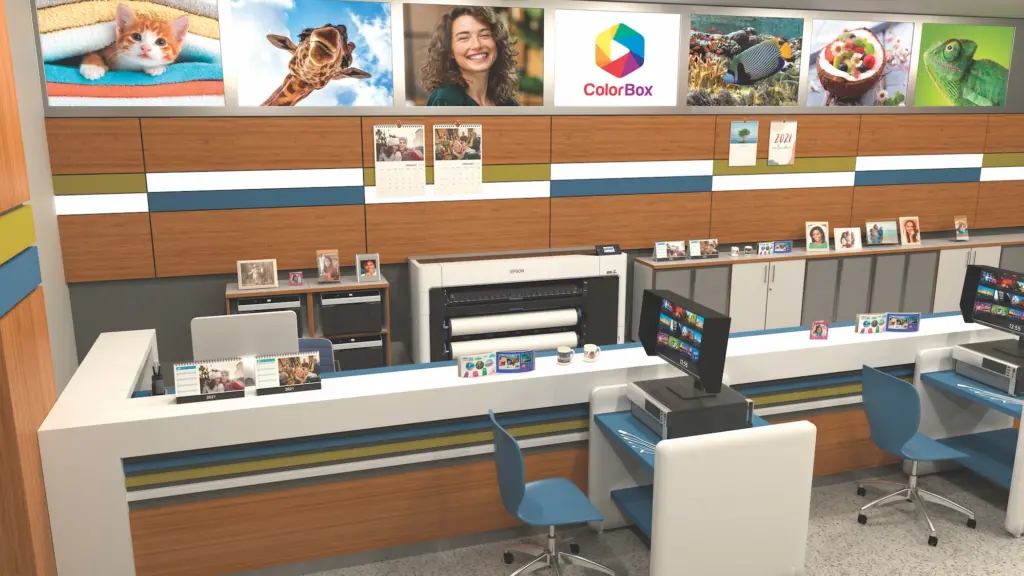
3. Volume and versatility equate to new income for shops
As PSPs look at investments for the future, the ability to provide high-quality output at fast speeds coupled across a range of media — with a small footprint to maximize productivity per square foot — is a winning combo for today’s market landscape. Simultaneously, demand for smaller-footprint photos, graphics, and stationery continues to grow.
With today’s aqueous solutions, print shops can seamlessly install a fleet of compact production printers to deliver both wide- and small-format output, meeting a variety of application uses. As more photo production printers offer front access, they can be set up against a wall, back-to-back, or in configurations not previously possible.
For PSPs looking to offer small-format production output, a new crop of aqueous minilab solutions, are enabling a variety of commercial and print service providers to open up product offerings to include high-quality, double-sided printing for seasonal cards, marketing collateral, promo items in packaging and the ability to upsell 4” X 6” and 5” X 7” and other small print sizes to customers. Lightweight and with a scalable design, businesses can easily add more printers to keep up with customer demand in smaller shop spaces.
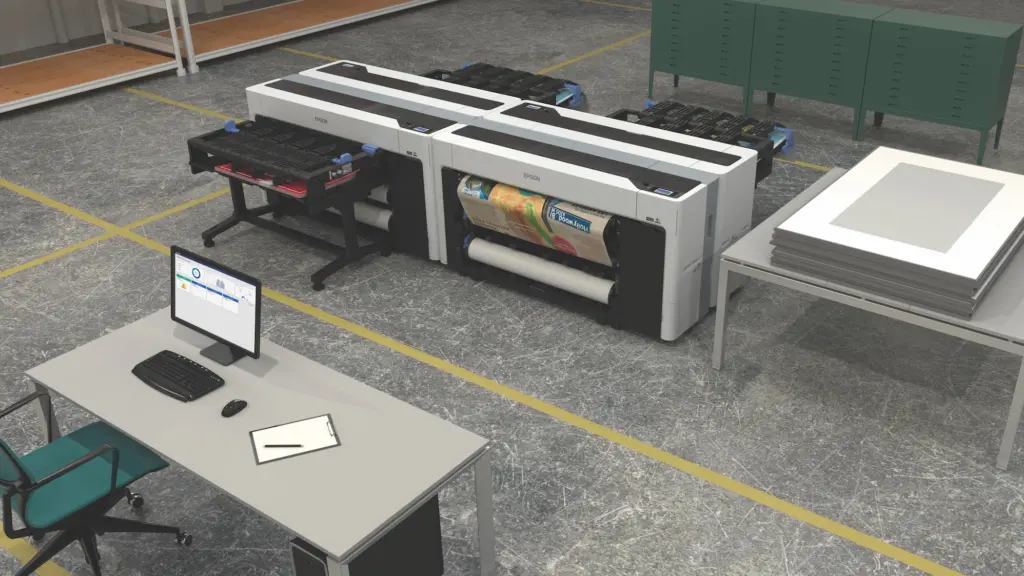
Planning for the future
As professional printers look at hardware solutions to bring increased productivity and expanded media flexibility to their shops, aqueous printers offer a range of benefits for new applications. From short-term signage to graphics applications, today’s commercial providers are turning to aqueous photo solutions instead of solvent or dye-sublimation for cost and time efficiencies. Just how much of a slowdown is looming remains to be seen, however commercial printers are starting to feel the pressure from the uncertainty of economic impacts.
From the diversification of products offered to scaling for the current market demands, now is the time for graphic and commercial printers to start planning and take advantage of opportunities for growth.

